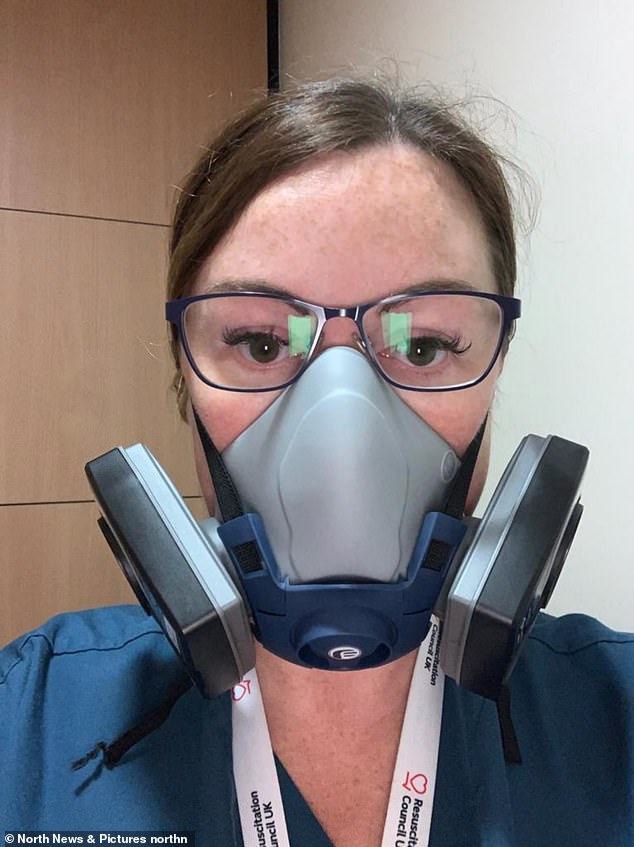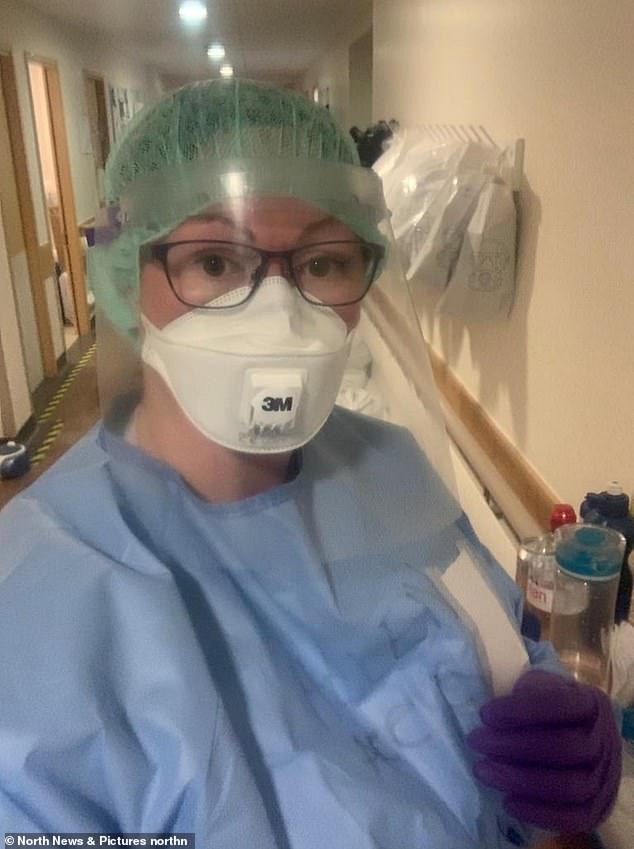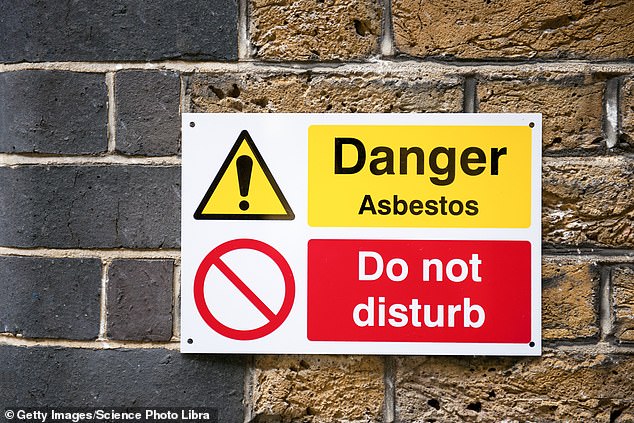Tens of thousands are dying because of asbestos-laden schools, hospitals and council houses. It’s the next big scandal, CHARLES PICKLES reveals, and a sordid tale of a government cover-up that means we’re STILL breathing in deadly fibres
Helen Bone is a 42-year-old mother of three young daughters. Three years ago, she was diagnosed with mesothelioma, a type of lung cancer that is only caused by exposure to asbestos.
As a nurse, Helen spent her life in hospitals, where there was asbestos everywhere, perhaps in ceilings, walls, floors, pipes, basically everywhere.
As a schoolgirl, she, like millions of us, was in buildings where asbestos was also present.
Mesothelioma (and other asbestos-related diseases) was once considered the “old working man’s disease” — contracted only by builders, miners and shipworkers. This is no longer the case.
We are now seeing the premature deaths of doctors, nurses and teachers who worked in public buildings with asbestos, and of thousands of other Britons who were exposed to it as schoolchildren. Helen is typical of this new category of patient.
Nurse Helen Bone, 42, with daughters Livvy, 16, left, and Maddy, 13
“I don’t know how long I’ll live,” she says. “But I do know this is the thing that’s going to kill me.”
The average life expectancy of someone diagnosed with mesothelioma is between four and eighteen months.
But despite her tragic circumstances, Helen says she is not angry: ‘I just want the government to take action to remove the asbestos so that no one has to explain to their three young daughters that Mummy won’t be around forever.’
July 5 — the day after the general election — is Action Mesothelioma Day. Of course, a new government faces a challenging to-do list with competing priorities, from the economy and national security to the NHS and migration.
But like Helen, I would like to see this issue — ridding Britain of the scourge of asbestos — high on the public health agenda. Let me explain why.
Asbestos is a silent killer: odorless, tasteless and deadly.
In fact, in Britain the disease is responsible for the deaths of 20,000 people a year, making it the biggest occupational killer in the country.
Yet 5.5 million buildings in the UK still contain this hazardous material.
I believe this is the next big scandal, similar to the Post Office/Horizon scandal or the infected blood crisis, hiding in plain sight with institutional denial and failure at its core.
So why have successive governments, over decades, been unable to come even close to resolving this crisis? The answer, I fear, is a sordid tale of cover-ups, disinformation and ministerial mismanagement on an unprecedented scale.

Three years ago, Helen was diagnosed with mesothelioma, a form of lung cancer caused only by exposure to asbestos.
The supposed safety of ‘undisturbed’ asbestos in our schools, hospitals and social housing is the biggest lie in public life. A lie that has already claimed thousands of lives and will claim thousands more if no action is taken.
Asbestos is a naturally occurring mineral that was widely used as a low-cost insulating material in the construction of most new buildings between the 1950s and the 1990s.
However, inhaling the microscopic fibers can cause lung cancer (including mesothelioma) and asbestosis, a serious inflammation and scarring of the lungs.
The use of brown asbestos was banned in the UK in 1985, with a similar ban on the less dangerous white derivative 14 years later. However, there has been no coordinated national effort to remove asbestos from the ground up. In 2002 I set up a company called Lucion, an asbestos consultancy dedicated to the careful monitoring and safe removal of the material.
In 2017, we were a global leader in hazard management, advising on everything from Legionella to radiation. But no matter how hard we tried, we couldn’t get policymakers to take much-needed legislative action on asbestos.
So in 2019 I sold Lucion. My friends and family said I was crazy. This was a company that I had dedicated my life to and had grown into a highly profitable, world-leading consulting firm.
But I couldn’t stay silent any longer. I now run the Airtight on Asbestos campaign, which aims to pressure the government to radically overhaul the UK’s approach to asbestos.
A report published in 2022 by the Department for Work and Pensions Select Committee made 16 recommendations for asbestos management. I regard three as fundamental and urgent: establishing a national asbestos database; drawing up a 40-year strategic plan to eliminate asbestos risk from UK infrastructure; and introducing effective air monitoring in areas where people are most at risk.

As a nurse, Helen spent her life in hospitals, where there was asbestos everywhere, maybe in ceilings, walls, floors, pipes, basically everywhere

Asbestos is a silent killer: odourless, tasteless and deadly. It is responsible for the deaths of 20,000 people a year in Britain, making it the country’s biggest occupational killer.
These recommendations were endorsed by the Department for Work and Pensions and a coalition of 28 unions representing 4.5 million workers. Yet the Health and Safety Executive (HSE) refused to support the measures and no action was taken.
So the question is: why is Britain lagging so dangerously behind, while France, Poland, the Netherlands and Australia are scrambling to save lives?
The first problem is that mesothelioma has a latency period of up to 40 years. Of the tens of thousands who are diagnosed with asbestos-related diseases each year, their exposure dates back decades, making it very difficult to prove cause and effect. They have lived their entire lives unaware of the ticking time bomb inside them.
The second problem is the reporting of deaths. I have told you that 20,000 people die each year in the UK from exposure to asbestos. However, the HSE estimates this to be only 5,000 people — a radical underestimation which undermines the need for immediate action.
But who is right? The HSE acknowledges that around 2,000 people die from mesothelioma each year in the UK. The international standard is to assume that the ratio of mesothelioma deaths to asbestos deaths from other cancers is 1:8. So some basic maths gives me my figure of 20,000.
However, the HSE refutes the international standard ratio and unilaterally uses its own 1:1 ratio, which gives its figure. Why does the HSE use its own completely unsubstantiated metric? I have asked its staff many times and never received an answer.
The third and perhaps most important reason why asbestos is not taken seriously enough in this country is the myth — perpetuated by the HSE — that undisturbed asbestos is ‘safe’.
I have been studying asbestos for almost a quarter century. Let me tell you, there is no such thing as safe brown asbestos in an occupied building.
Asbestos is incredibly brittle. It doesn’t take much to disrupt the material and release deadly microscopic fibers into the atmosphere. Bad weather, a child slamming a school door, or simply throwing a ball against a wall is enough to send thousands of fibers into air vents and eventually into classrooms.
And remember, the buildings that have asbestos — whether it’s a hospital or a school — were designed in the 1960s and ’70s to last about 40 years. They’re now under almost constant maintenance. Every time contractors do work, they’re inadvertently disturbing asbestos in the building. It’s impossible not to.
According to HSE policy, 0.1 asbestos fibre per millilitre in the air is the safe limit.
But what if I told you that 0.1 fibers per milliliter equals 8 fibers per breath, 10,000 fibers inhaled per hour, and 60,000 fibers per school day per child? Does that still sound safe?
As a father of three, these numbers make me furious.
Even more shocking, the HSE’s own research puts the safe limit at 0.0001 – significantly lower than the current figure.
Why is there such a discrepancy between the advice of HSE scientists and their official policy?
I’m afraid it all comes down to accountability. Over the nearly 50 years of its existence, the HSE has failed the British public dramatically on asbestos.
This is the biggest national scandal of our lifetime. But no one, from the HSE to Downing Street, wants to admit it because the liabilities will be too great — both financial and professional — for those who failed to take action.
Ironically, a recent cost-benefit analysis estimates that it will cost the government three times as much in the long run if they do not address the problem directly. Unfortunately, no government has ever been willing to take a long-term view.
The reality is that we have the technology and the expertise to stop this madness. All we need now is the political will — to minimize the risks and protect the lives of millions of our children and young people.
A national database, an air monitoring system and a strategic plan to remove asbestos from our built environment – starting with buildings at greatest risk – is a given.
Dare I hope that a new government will listen and finally take a sane approach to what will otherwise be a very costly mess for the state coffers – and cost many more lives in the future?
It doesn’t seem like too much to ask, does it? To grant Helen Bone’s wish?
